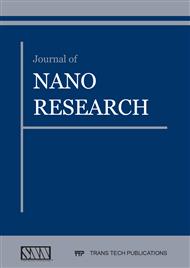[1]
T. Chudoba, Thesis, Forschungszentrum Rossendorf, FZR- 143 (1996).
Google Scholar
[2]
T. B. Massalski,, Binary Alloy Phase Diagrams, American Society for Metals, Metals Park, Ohio Vol.1. (1986).
Google Scholar
[3]
R. W. Cahn and P. Haasen in: Physical Metallurgy, Structure and Stability of Alloys, Vol.1, North-Holland, Amsterdam. p.134. (1996).
Google Scholar
[4]
A. Hightower, B. Fultz, R.C. Bowman, Mechanical alloying of Fe and Mg, J. Alloys and Compounds, 252. 238–244 (1997).
DOI: 10.1016/s0925-8388(96)02732-6
Google Scholar
[5]
G.A. Dorofeev, E.P. Yelsukov, A.L. Ul'yanov, Mechanical Alloying of Immiscible elements in the Fe–Mg System, J. Inorg. Mater., 40, No.7, 690–699. (2004).
DOI: 10.1023/b:inma.0000034767.14276.a9
Google Scholar
[6]
E. P. Yelsukov, G.A. Dorofeev, A.L. Ulyanov, Mechanism and kinetics of mechanical alloying in an immiscible Fe--Mg system, Czechoslovak J. Phys., 55, No.7. 913-921 (2005).
DOI: 10.1007/s10582-005-0092-0
Google Scholar
[7]
N. Dubrovinskaia, L. Dubrovinsky & C. McCammon, Iron-magnesium alloying at high pressures and temperatures,, J. Phys. Cond. Mat. 16: S1143–S115 (2004).
DOI: 10.1088/0953-8984/16/14/024
Google Scholar
[8]
N. Dubrovinskaia, L. Dubrovinsky, I. Kantor, W. A. Crichton, V. Dmitriev, V. Prakapenka, G. Shen, L Vitos, R. Ahuja, B Johansson & I. A. brikosov. Beating the miscibility barrier between iron group elements and magnesium by high-pressure alloying,, Phys. Rev. Lett. 95: 245502. (2005).
DOI: 10.1103/physrevlett.95.245502
Google Scholar
[9]
X-Pert Plus software – Program for Crystallography and Rietveld Analysis, Philips Analytical (1999).
Google Scholar
[10]
G.K. Williamson, W.H. Hall: Acta Metall. 1 22.
Google Scholar
[11]
L. Castex, J.L. Lebrun, G. Maeder, J.M. Sprauel, Détermination de Contraintes Résiduelles par Diffraction des Rayons X, vol.22, Publications scientifiques et techniques de l'ENSAM, Paris, 1981, p.51–60.
Google Scholar
[12]
A. El Mohri, A. Guittoum, K. Taibi, M. Azzaz J. Journal of Nano Research.
Google Scholar
[13]
R.A. Varina, S. Lia,b, Ch. Chiua, L. Guoa, O. Morozovac, Nanocrystalline and non-rystalline hydrides synthesized by controlled reactive mechanical alloying/milling of Mg and Mg–X (X = Fe, Co, Mn, B) systems Journal of Alloys and Compounds 404–406 (2005).
DOI: 10.1016/j.jallcom.2004.12.176
Google Scholar
[14]
T. Khomenkoc, Z. Wronskid, J.M.D. Coey, Magnetic materials, Journal alloys and Compounds, 326 (2001) 2-6.
Google Scholar
[15]
Masafumi Chiba, Hideki Hotta,TohruNobuki,Atsushi Sotoma, Toshiro Kuji, Microstructure dependence of the magnetic properties in fine Mg-Tm (Tm: Co, Fe) particles by using a mechanical alloying technique, Journal of Magnetism and Magnetic Materials (2007).
DOI: 10.1016/j.jmmm.2007.02.179
Google Scholar


